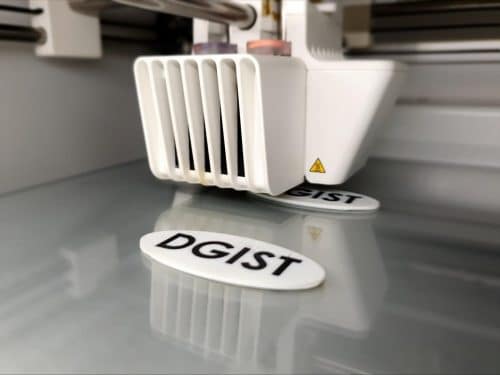The multifunctional 3D-printed pressure sensor is embedded with a temperature sensor from conductive carbon-based composites.
A team at the Daegu Gyeongbuk Institute of Science and Technology (DGIST) have developed a multi-directional pressure sensor coupled with a temperature sensor using 3D printing technology that is low-cost and scalable to large-scale production of smart robotic systems.

Today, with the advancement in 3D printing technology, flexible sensors are being developed to cater to various needs. However, all 3D-printed pressure sensors developed so far are limited to sensing applied forces along one direction only. While this seems enough in theory, real-world applications need much more. There are situations where forces can be applied along with various angles and directions and this is where the sensor’s capabilities must be expanded.
The team led by Prof. Hoe Joon Kim has addressed this issue with a newly designed multi-axis pressure sensor coupled with a temperature-sensing component that overcomes the limitations of conventional sensors. “Our multi-axis pressure sensor successfully captures the readings even when tilted forces are applied,” said Prof. Kim.
Also, an added concern is that the electrical resistance of most conductive polymers varies with temperature and must be compensated for accurate pressure sensing. The team also managed to tackle this. “The temperature-sensing component can calibrate the resistance shift with temperature changes. In addition, the scalable and low-cost fabrication process is fully compatible with commercial 3D printers,” explains Prof. Kim.
Using multi-walled carbon nanotubes (MWCNTs) and polylactic acid (PLA), they first prepared the printable conductive polymer. Then using a commercial elastomer, the sensor body was built and 3D printing enabled the formation of the sensing material. The sensor is based on a bumper structure with a hollow trough beneath and employs three pressure-sensing elements for multi-axis pressure detection and a temperature-sensing element for calibration of resistance. The bumper structure enables it to distinguish among surfaces, human movements and gripping actions.
“The proposed 3D printing technology has a wide range of applications in energy, biomedicine, and manufacturing. With the incorporation of the proposed sensing elements in robotic grippers and tactile sensors, the detection of multi-directional forces along with temperature could be achieved, heralding the onset of a new age in robotics,” comments Prof. Kim, who is excited about the future aspects of this technology.





